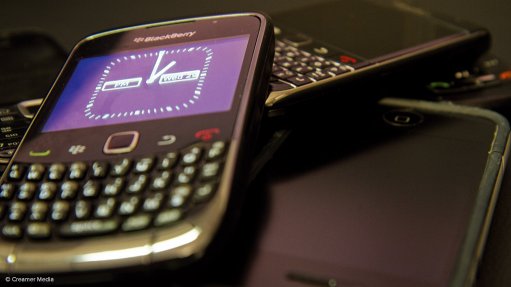
Photo by: Duane Daws
With an increasing uptake of smartphones in sub-Saharan Africa on the back of rapidly growing demand for access to the Internet, the ‘smart’ mobile phone could potentially bridge the digital divide, a report by Ericsson has revealed.
Ericsson’s ConsumerLab report, released this week, said the smartphone enabled Internet access to a wider scope of citizens, which would change the regional status quo and enable a level of connectivity not seen before.
While basic and feature phones remained the dominant mobile technology, the growth in the uptake of the smartphone – an essential device in connecting personal and professional lives, as well as society at large – was expected to significantly increase, said Ericsson sub-Saharan Africa head of marketing, strategy, government and industry relations Shiletsi Makhofane.
Mobile phones continued to be an “extremely influential” technology across sub-Saharan Africa, with their low cost and multifunctionality features, compounded by the region’s lack of fixed-line infrastructure, propelling the mobile phone’s status as the “leading device”.
Ericsson’s ConsumerLab report noted that the mobile phone was the most important piece of technology to 73% of mobile users, with Ericsson’s Mobility Report previously pointing out that the mobile phone was the most used device among sub-Saharan African consumers.
Ericsson head of sub-Saharan Africa Fredrik Jejdling said that, during the third quarter of the year, 25-million of the 113-million new mobile subscriptions worldwide emerged from sub-Saharan Africa, surpassed only by China with the addition of 30-million mobile subscriptions for the period.
Within the next four years, mobile subscriptions in sub-Saharan Africa would rise from the current 560-million to 930-million.
Global smartphone subscriptions would soar to 5.6-billion by 2019, while an estimated 476-million smartphones were expected to reach the sub-Saharan African market within the next four years.
“Smartphone users are driving Internet use and are showing strong interest in performing data-intensive mobile activities such as video calling, watching live TV shows and streaming videos from channels such as YouTube,” he added.
Further, the anticipated introduction of a smartphone in the “$50 price range” would be key to the trend of growing Internet use across the region.
“Our analysis shows that the entry of low-cost smartphone handsets in the market will allow people from different social classes to benefit from an integrated ecosystem,” Makhofane said.
More than half of consumers not using the Internet on their phones were interested in doing so in future, while 62% of mobile app users believed that apps were more effective than mobile sites.
Apps were likely to evolve beyond entertainment and communication, the ConsumerLab report found, adding that they had the potential to fill service gaps in many sectors, including education and transport.
“The success of financial applications such as M-Pesa has put sub-Saharan Africa on the map. Today, mobile banking is primarily used for buying airtime, transferring money and receiving bank/credit card notifications. But the trend of conducting financial transactions via mobile phones has a promising future, and consumers could eventually use them to pay for school fees, fast food, groceries or fuel,” the report explained.
South Africa, Nigeria and Kenya were currently the leading markets in sub-Saharan Africa in terms of smartphone ownership, while in terms of mobile subscriptions per country, Nigeria led the way, followed by South Africa, Kenya, Ghana and Tanzania.